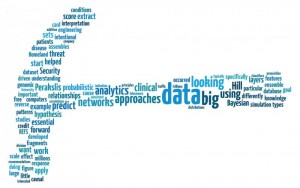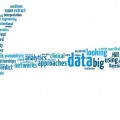
Let’s break this down
Data analytics is complicated. If you are starting out as small business, there are many layers that are part of understanding analytics. You cannot read 5 or 10 blogs about data analytics, watch a few videos on YouTube and be good to go. You’re actually just selling yourself short. The research I have done shows that companies, especially small businesses, do not use all the advantages and resources of their analytical software. It more than cluster analysis and data segmentation. Most data charts organically result in a form of visualization. John Bates works as the Product Manager for Predictive Marketing Solutions at Adobe Systems, Inc. His blog post about data analytics helps you grasp what direction you need to go with your research and use of analytical data. He keeps it simple and to the point.
Find the “Gold Nuggets” in your Data
Get ahead now and understand how to interpret the data you gather, whether that be interviews, focus groups, surveys, or online website analytics. This video explains how important it is to be one of the companies that knows how to use its internal and external data. Even if you’re not good at mathematics, it’s all about knowing who to use as a source and use their “insights to transform the way the business operates.”
Advance Your Knowledge
Now that you know what the major challenges and mistakes are, I challenge you to obtain a more in-depth understanding about how to transcend your data analysis with metadata, data visuals, and advancing your skills in monitoring and cross-analyzing internal and external analytics you have and will research.
Here are some of the key steps of analytics:
- Reporting what happened
- Analysis
- Monitoring
- Forecasting
- Predictive
- Prescriptive
Companies that do not understand all of these steps will not come out on top in their industry. Educate yourself. I cannot stress that enough. These steps will be discussed in the video below. (You can stop viewing at the time length 21:40 if you prefer.)
Too much information?
Interpreting data has excelled and technology compresses and distributes the data as an advanced, complicated, and real time source of information. However, without human intelligence, your company will not succeed to its full potential. If your personal learning plan (PLN) and personal research is not helping you in the way you need, I recommend you outsource or hire someone who can interpret your data properly. However, do not sell your research sort; it will be beneficial in having the ability to communicate to your analytics expert. Also, outsourcing is a great way to ensure you are not developing tunnel vision also. Weigh your options and do what will be best ultimately for the company long term.
